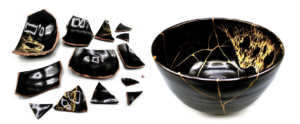
What Jesus Wants Us to Know on Good Friday

The gospel of John has just 21 chapters, and five of them (one-quarter of the narrative) are dedicated to Jesus’ last words to His close friends before the horror-story of the cross. This was no pep talk. In fact, what we now call “Holy Week” was a disorienting, disturbing, isolating, and shattering experience for the disciples…
- Peter is seething and indignant after Jesus predicts his certain betrayal,
- Judas slinks away from the Passover table after he’s outed as a murderous conspirator,
- Thomas is baffled when Jesus invites them to follow where He’s going,
- Philip still doesn’t understand who Jesus really is, or what He came to do,
- The “other” Judas still assumes the “good news” Jesus is bringing is reserved just for Jews, and…
- Jesus delivers one stark warning after another—“I chose you to come out of the world, so it hates you” and “Since they persecuted me, naturally they will persecute you” and “The time is coming when those who kill you will think they are doing a holy service for God.”
The paintings that capture the Last Supper infect our imagination with a tame version of the truth—sure, the scene around the table is sad and serious, but the shock of what is happening is seriously underplayed. Jesus has already explained the relationship between death and life to them—“Unless a kernel of wheat is planted in the soil and dies, it remains alone”—but now reality has come home to roost. His impending death will open a portal into life for all who are in Him. But the disciples are about to experience a shattering themselves. All will be broken by what happens to Jesus, and the political/religious movement they thought would carry them into lives of significance will die with Him.
Today—in our culture, in our churches, and in our lives—so many are experiencing a similar shattering. We are seething and indignant over the state-sponsored (and sometimes church-sponsored) brutality we see in the news every day. And some of our neighbors (and Christian brothers and sisters) have been outed as co-conspirators in this brutality. We are baffled by where Jesus is going with all of this, and are unsure of how to follow Him. So many of us have forgotten who Jesus really is and what He came to do. Meanwhile, some in our Christian tribe believe the good news of Jesus is only for the privileged few. Finally, we’ve tacitly ignored that Jesus said we “will have trouble in the world,” and told ourselves (instead) that the promises of the American Dream trump the “sacrifice of joy” inherent in the Christian life.
We are immersed in disorientation, just as those gathered around that upper-room table were so long ago. Who will pick up the pieces of our shattered life?
The Japanese art form Kintsugi is best translated “golden joinery.” Skilled artists restore the broken pieces of a shattered piece of pottery using a special lacquer mixed with gold—the idea is to highlight (not hide) the broken pieces, elevating the beauty of the restored piece far beyond the original (see the photo above). This form of repair celebrates the breakage as part of the object’s history, rather than the end of its story. Likewise, we see the shattered pottery shards of our soul as a hopeless pile of unmet hope. That’s why the superseding message of Jesus in John 13 – 17 is so important for us to remember—He is inviting us to offer our broken shards with childlike vulnerability; in return, He will work with what we’ve given Him to Kintsugi us into something beautiful:
“I am praying not only for these disciples but also for all who will ever believe in me through their message. I pray that they will all be one, just as you and I are one—as you are in me, Father, and I am in you. And may they be in us so that the world will believe you sent me. I have given them the glory you gave me, so they may be one as we are one. I am in them and you are in me. May they experience such perfect unity that the world will know that you sent me and that you love them as much as you love me. Father, I want these whom you have given me to be with me where I am. Then they can see all the glory you gave me because you loved me even before the world began!” (John 17:20-24).
Yes, Jesus says we’ll have trouble in the world, but (we’re promised) He has “overcome the world.” What does that really mean, and why does it matter to us—not just at the end of Holy Week, but in our everyday life? It’s just this…
Though we live immersed in trouble, Jesus invites us to remain in Him like a branch intimately joined to the Vine. Here, under the shell of our American home, we find an inner sanctum that is our real home—the heart of Jesus. When we pursue the truth and live in the ways of Jesus, we will feel (at times) isolated, disoriented, confused, and hated… But then we remember where we live, and the master of the house has already emphasized “I want these whom you have given me to be with me where I am.” The “perfect unity” Jesus is describing is not the perfect unity we experience underneath our discordant Christian umbrella—it’s the unity we experience when we open ourselves like children to His invitation to wallow in His heart.
Jesus wants to take our broken pieces and make something beautiful with them. He intends for us each to become a work of art, under the influence of His artistry. He is the Kintsugi master…
*Kintsugi pottery ©Photos by Naoko Fukumaru
Two Good Friday Questions to Mull:
1) In what ways have I already seen Jesus putting my broken pieces back together, turning them into something more beautiful?
2) Betrayal shattered our trusting relationship with God—what is Jesus doing, right now, to build a bridge back into a trusting relationship with Him?
Take Your Next Steps
At Vibrant Faith we’ve created two resources designed to help ministry leaders live out what Ben dreamed of doing a quarter-century ago. Familying the Faith is a kit that includes a new e-book (written my Dr. Nancy Going and I) along with two MasterClass sessions featuring Dr. Christian Smith, sociology of religion professor at Notre Dame, and Laura Kelly Fanucci, writer and founder of Mothering Spirit. And Practical Tools for Raising Faithful Kids bridges the gap between knowledge and practice – for parents who want to influence their kids toward a deeper faith. You get six lessons for hybrid-learning formats, editable leader and participant guides, and a PowerPoint slide deck. Check out these one-of-a-kind resources, and take your next step toward a home-centered, church-supported revolution in your church culture.

Rick Lawrence is Executive Director of Vibrant Faith—he created the new curriculum Following Jesus. He’s editor of the Jesus-Centered Bible and author of 40 books, including his new release Editing Jesus: Confronting the Distorted Faith of the American Church, The Suicide Solution, The Jesus-Centered Life and Jesus-Centered Daily. He hosts the podcast Paying Ridiculous Attention to Jesus.
